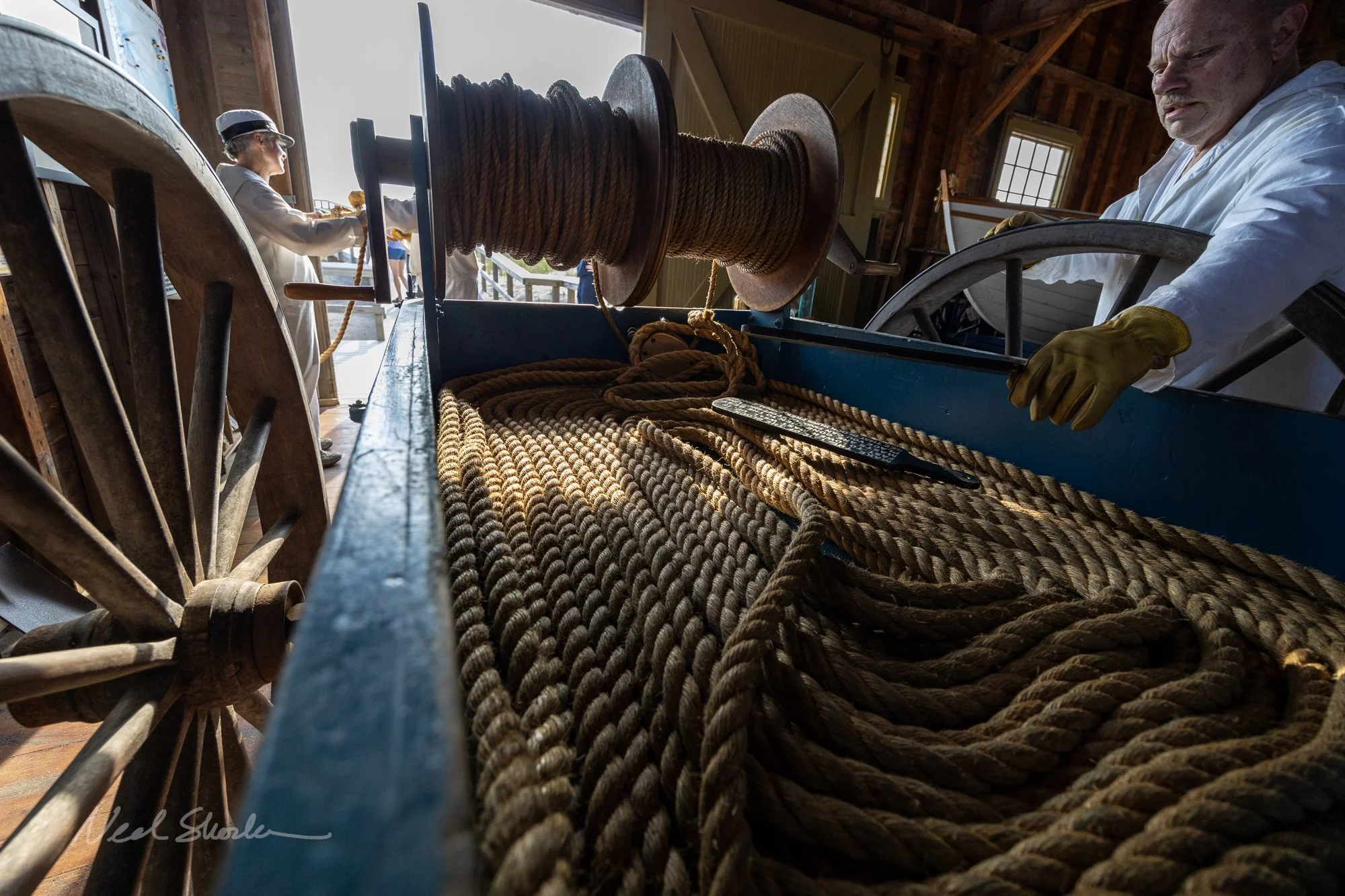In 1848, through an act of the US government, the United States Life Saving Service (USLSS) was created. The USLSS built life saving stations up and down the eastern coast of the United States as well as on the shores of the Great Lakes. As the precursor to the US Coast Guard, the USLSS was responsible for patrolling the beaches and to rescue seamen stranded on ships when they wrecked or foundered off the coast. Most of the wrecks occurred during the winter months, and in the warmer weather, when there was little threat of shipwrecks, the crew of each Life Saving Station conducted the Beach Apparatus Drill to practice the skills they would need when the weather wasn’t so fair.
The Old Harbor Life Saving Station, located at Race Point Beach in Provincetown, MA, is where rangers from Cape Cod National Seashore perform the Beach Apparatus Drill every Thursday evening in July and August. This drill reenactment is built around the gear, uniforms and processes used during 1902.
During the drill each surfman performs specific duties as they practice a rescue from the “wreck pole.” The images below illustrate some of the activities performed during the drill.















































